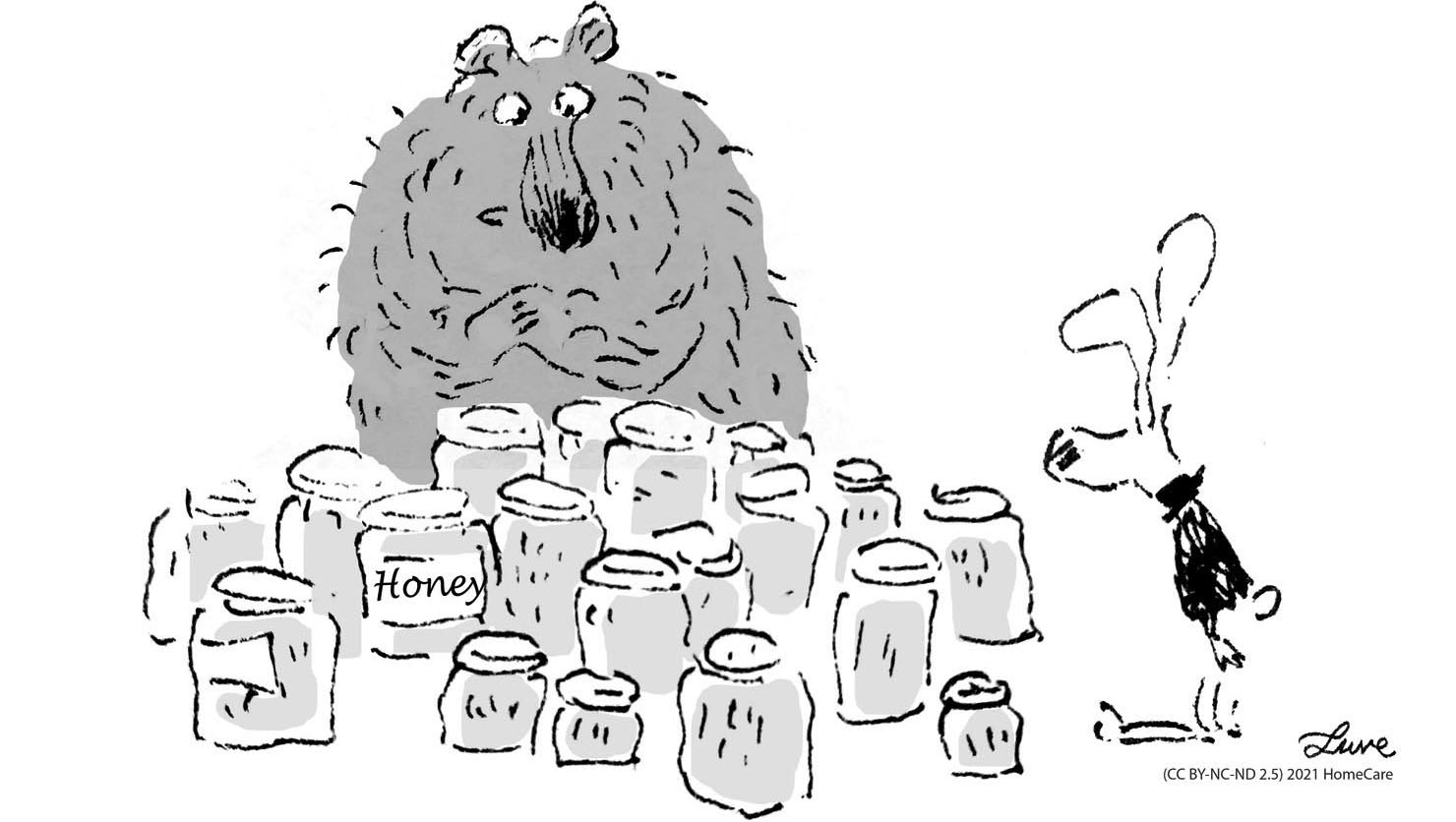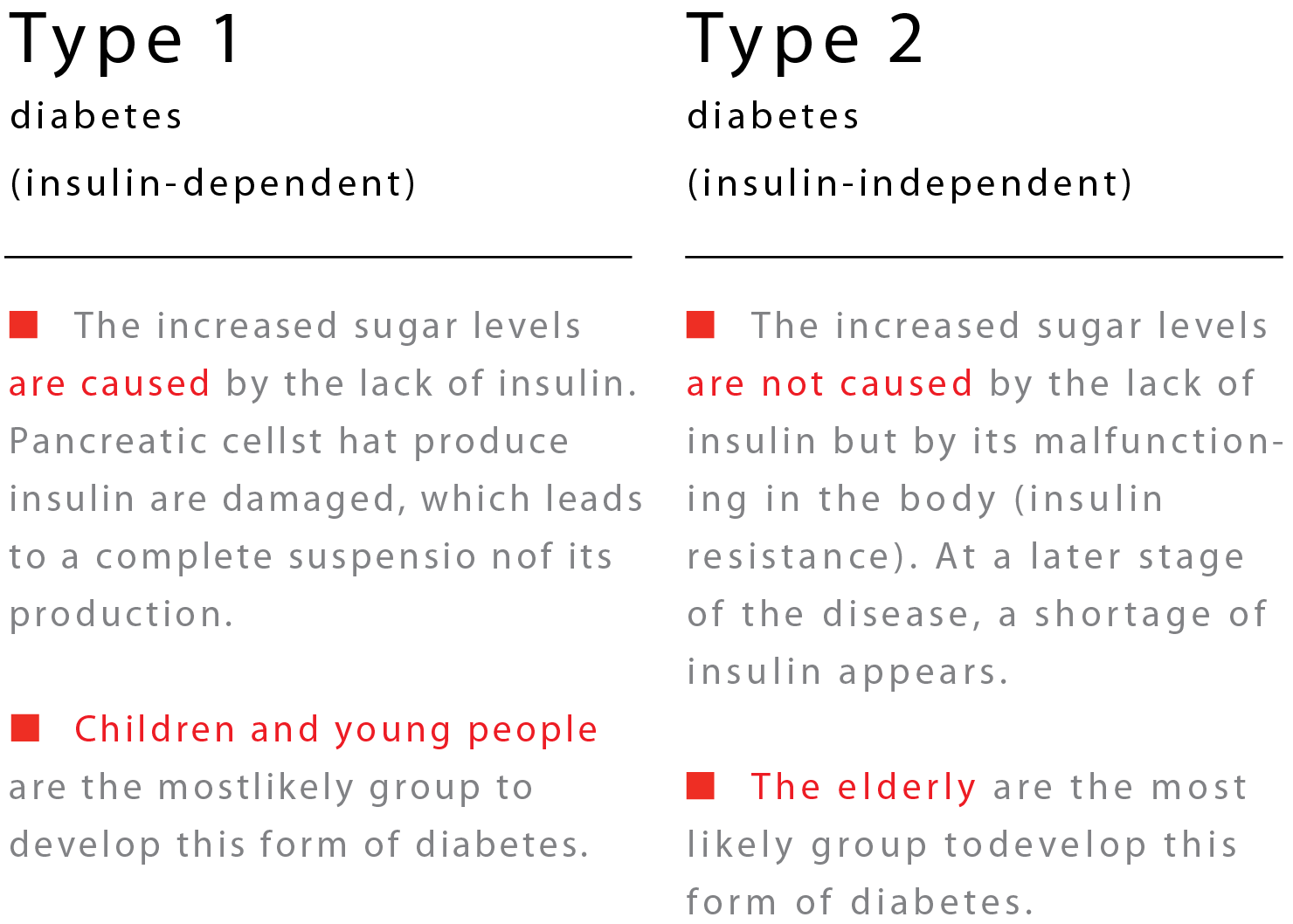
“What do you mean ‘unhealthy’?”
Diabetes is a chronic metabolic condition in which blood sugar levels are abnormal due to a deficiency or malfunctioning of insulin.
In the elderly, carbohydrate metabolism disorders become more common. This is due to the fact that the tissues are resistant to insulin, the production of which also decreases with age. This condition is known as diabetes.
We distinguish two basic types of diabetes:

Type 2 diabetes most often occurs in people who are physically inactive, overweight or obese and suffer from hypertension and high cholesterol levels.
![]() Remember
Remember
If left untreated, diabetes in the elderly may result in very dangerous complications putting one’s health and life in risk. The most common of them include atherosclerosis, heart attack or stroke. Complications also frequently affect eyes, kidneys, as well as the nervous system.
What are the symptoms of diabetes?
![]() Increased thirst
Increased thirst
![]() Frequent urination
Frequent urination
![]() Increased appetite and eating large portions of food without gaining weight, or even losing weight instead
Increased appetite and eating large portions of food without gaining weight, or even losing weight instead
![]() Itching and changes on the skin, slow healing of wounds
Itching and changes on the skin, slow healing of wounds
![]() Physical weakness
Physical weakness
![]() Obesity
Obesity
![]() Visual disturbance, blurred vision, difficulty reading
Visual disturbance, blurred vision, difficulty reading
Treatment and prevention
A balanced diet constitutes the basis for the treatment of diabetes in the elderly. In this case, it is crucial to maintain regularity in eating meals, as well as to ensure diversity in terms of meal quality. A healthy lifestyle may also alleviate the symptoms of the disease.

Pharmacotherapy involves oral insulin stimulant medication and insulin injections.
![]() Remember
Remember
While regular intake of medicines and meals may seem easy, for the elderly this is not always the case. Therefore, it is worth taking care of it and monitoring the person’s health. Elderly people who experience mobility problems should be provided with the help of a physiotherapist. It is also worth maintaining constant contact with the person’s general practitioner.
When caring for a person with diabetes, the following rules should be observed:
![]() Changing the rules of nutrition (consulted with a doctor) or strict adherence to the diet if the elderly person is already on one
Changing the rules of nutrition (consulted with a doctor) or strict adherence to the diet if the elderly person is already on one
![]() Observing a diet with a low glycaemic index based on regular meals
Observing a diet with a low glycaemic index based on regular meals
![]() Taking medicines as recommended by the doctor
Taking medicines as recommended by the doctor
![]() Controlling glucose levels at home using a glucose meter
Controlling glucose levels at home using a glucose meter
![]() Monitoring body weight and vital functions of the elderly person (e.g. blood pressure)
Monitoring body weight and vital functions of the elderly person (e.g. blood pressure)
![]() Physical exertion should be regular and adapted to the current state of health and the condition of the elderly person. Walking, nordic walking, dancing, etc. are advisable.
Physical exertion should be regular and adapted to the current state of health and the condition of the elderly person. Walking, nordic walking, dancing, etc. are advisable.
Back Next
![]()
Common Diseases of the Elderly:60% complete
